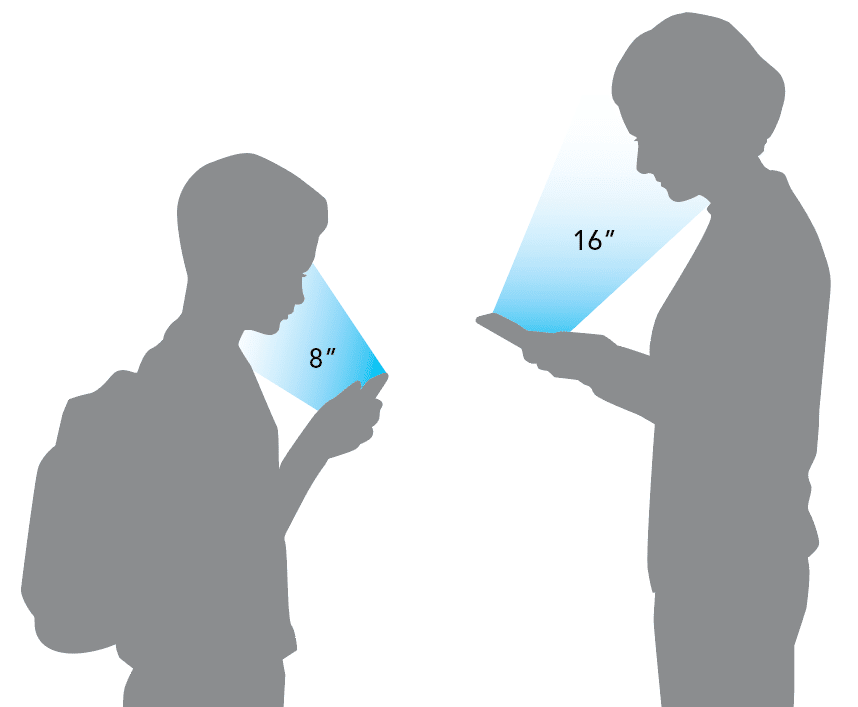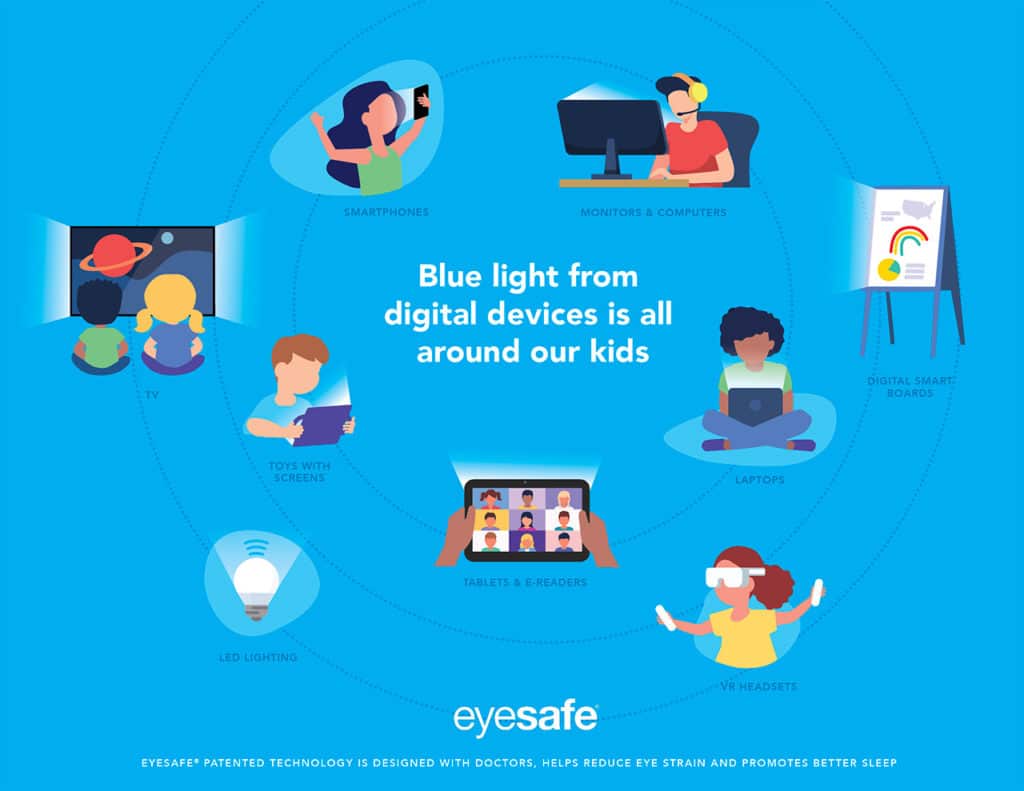High-energy blue light, or simply “blue light”, has been a frequent topic in the media over the last several years. We get blue light from several sources, including the sun, computers and smartphones. Although humans have evolved to accommodate proper amounts of beneficial blue light from the sun, we are only now recognizing that man-made digital light presents new concerns for the health of our eyes. Today, artificial LED-produced blue light is nearly inescapable, and is presented through dozens of man-made sources, including streetlights, interior lighting, and through our many digital devices, such as smartphones, tablets, laptops, and desktop monitors. This latter category of digital devices is of particular interest because we are often positioned very close to our device screens, day after day, for many hours at a time.
There is a large body of research on the impacts of blue light on humans, specifically on eye health, sleep, productivity, and behavior. The research suggests we should take caution when it comes to blue light, especially with children, who are more susceptible to blue light because the lens of a child’s eye doesn’t filter blue light as effectively as an adult lens (fig. 1).1

Research also reveals that children absorb 45% more toxic blue light through the retina than people 25 and older1 and children often hold digital devices closer to their faces potentially exposing them to 4x higher amount of blue light (fig. 2)2.
Concerned about the vulnerability of children to blue light, the French Minister of Ecological Transition announced a new measure on May 8, 2021 to limit blue light in toys with LEDs by 2022. This announcement follows the 2018 French Senate parliamentary discussion on the harmful effects of blue light and its subsequent request to the French agency ANSES to examine the dangers of blue light and formulate recommendations. The resultant 2019 report from ANSES, co-authored by several highly respected French scientific researchers, highlights the need to preserve health and the environment through measures that protect the most sensitive populations, starting with children, whose eyes are particularly sensitive to light and not yet fully developed.

This proactive stance on blue light reflects a tradition of research excellence in France, with many scientific experts having ties with the renowned research center in the vision sector of the Vision Institute. The Vision Institute is one of the most distinguished research centers for vision and eye diseases in the world, and certainly the largest in Europe.
As we think to the future, the French initiative to limit blue light emitting toys may spark other governmental bodies to enact similar measures, or even regulation. There are millions of digital devices used by children for e-learning and enrichment activities. Digital devices emit blue light, and children often use them everyday for hours at a time.
Think of a high school student, who takes online courses, uses her laptop to draft papers and complete schoolwork, and then switches to her cell phone to scroll social media and text with friends. She is on digital devices for many hours each day.
It is practical to envision a future in which manufacturers are required or opt-in to voluntary guidelines for blue light emissions, as a means of protecting children and their most vulnerable eyes. Certainly, technology exists today to help manufacturers reduce the blue light emitted from devices. It may be their social and moral obligation to reduce blue light so as to protect the health of our society for years to come.
Additional Resources:
- ANSES 2019 https://www.anses.fr/en/content/leds-blue-light
- The Vision Institute https://www.institut-vision.org/en/
- INSERM https://www.inserm.fr/en
[1] Behar-Cohen F, et al. Light-emitting diodes (LED) for domestic lighting: any risks for the eye? Progress in Retinal and Eye Research. 2011 Jul;30(4):239-57.
[2] https://www.ncbi.nlm.nih.gov/pmc/articles/PMC6288536; 2. Blue light impact in children, Infant & Children’s Vision Resources supported by The American Optometric Association and Optometry Cares – The AOA Foundation
Shop Eyesafe® Low Blue Light Solutions:
Notebooks, Monitors and Computers with Eyesafe >
Eyesafe® Blue Light Screen Filters for all digital devices >
